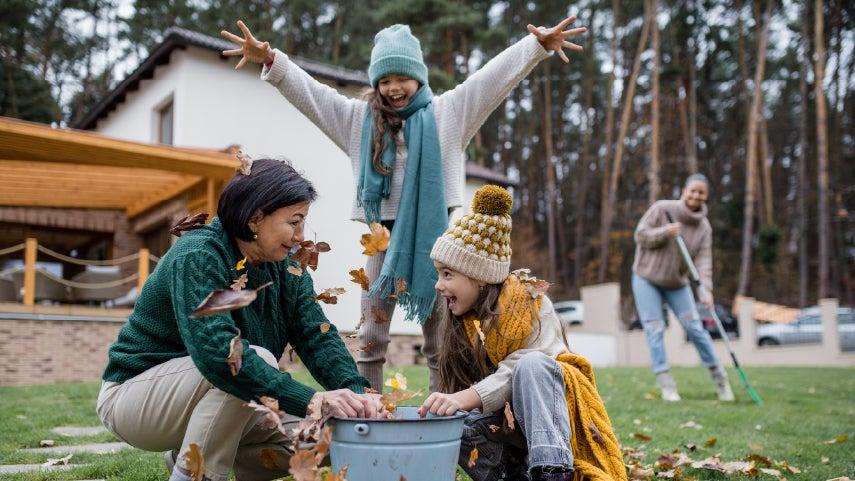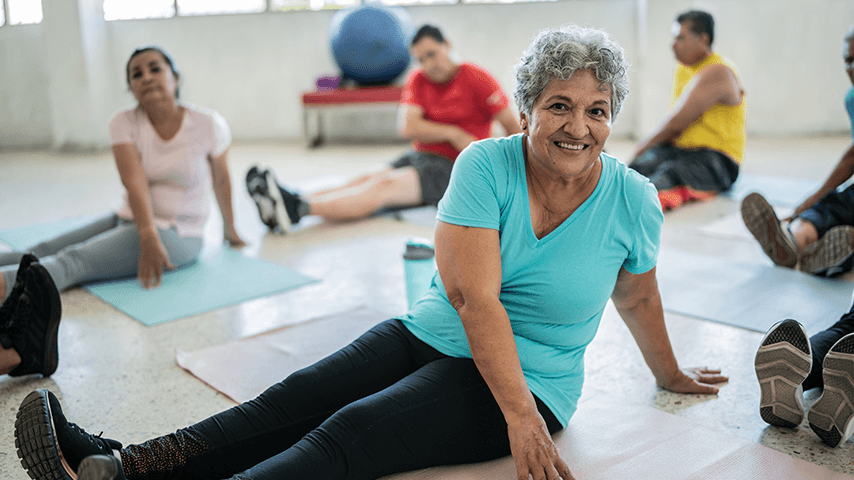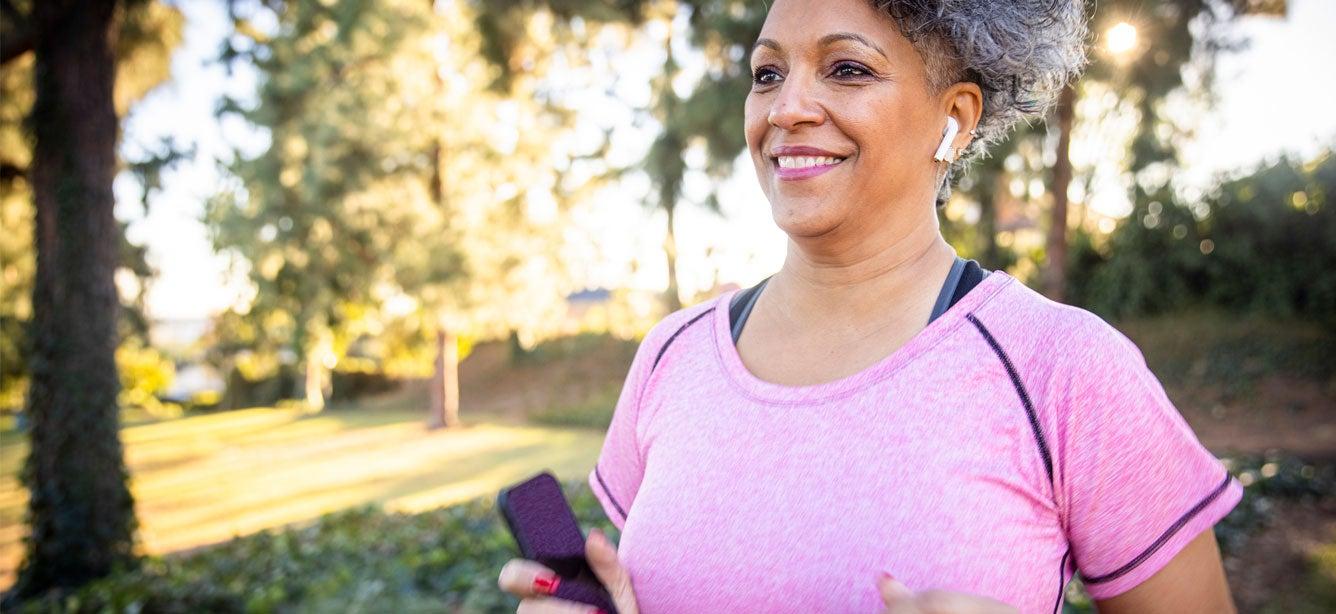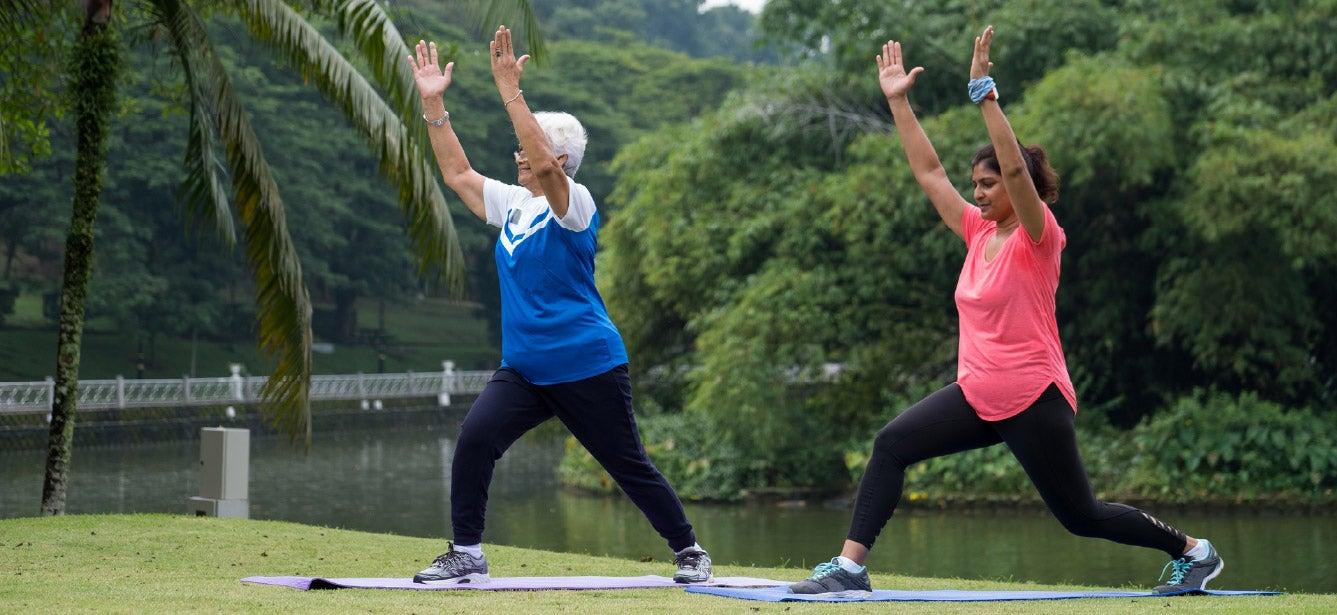Play for All Ages: The Benefits of Intergenerational Recreational Physical Activity
8 min read

Related Topics
You may be aware that staying active is essential for maintaining your physical health, but did you know it also improves brain function and emotional well-being?1,2 Another benefit: If your family and friends join in your physical activity routine, you can:
- Enhance your social connectedness
- Strengthen bonds with loved ones
- Encourage healthy behaviors
We are hardwired to seek out playful opportunities to have fun with others through physical movement and expression, with the feel-good neurotransmitters endorphin and dopamine being released through activities that combine physical and social elements.3,4 Bringing the children, teens, or young adults in your life into play and physical activities provides bonus benefits for everyone.
No matter your current fitness level, increasing your movement and activity engagement through intentional intergenerational play—such as recreational sports—is a great way to reinforce healthy behaviors across the lifespan while having fun.
What is intergenerational play?
We all know what it feels like to get lost in an engaging activity or pastime with those around us—just think of the common phrase, “Time flies when you’re having fun.” But have you ever thought about the impact of play on your own or your loved ones’ health and well-being?
Play is an essential aspect of what it means to be human and is not just about amusement; it is critical for connecting with and learning from those around us. Since the beginning of time, individuals from different generations have joined together in intergenerational play to foster meaningful connections that strengthen families and communities.
Intergenerational play refers to activities and shared experiences that bring together people of different ages, typically within a family or community setting, for the purpose of fun or fulfillment.5 This might include:
- Completing puzzles or board games
- Playing recreational sports
- Engaging in imaginative play
These intergenerational interactions can amplify the play experience by bringing in novel perspectives and broadening collective knowledge and skill sets.6,7 In intergenerational play, there are no right or wrong answers. Everyone involved can reap the physical, emotional, social, and intellectual payoffs of being both a teacher and a learner.8,9
The benefits of physical forms of intergenerational play
While there are many forms of play, one of the most impactful throughout the lifespan is play through physical activity. Physical forms of play involve engaging in activities that mimic the natural movements humans have performed throughout history in creative and purposeful ways and require moving our bodies in ways that strengthen key muscles and support balance.5 Physical play can include a wide variety of activities ranging from short bursts that increase one’s heart rate (like sprinting, skipping, or jumping) to endurance-building activities (like hiking, swimming, or completing repetitive movements).
Another essential aspect of physical play is that it is collaborative. Whether on the playground or through rough and tumble play, children benefit from physical play with others by developing a critical awareness of social norms while refining their fine and gross motor skills. Teenagers and young adults see improvements in mental health, self-esteem and confidence, and sense of social connectedness through physical forms of play. As adults, we continue to benefit from cooperative play in team and competitive activities by improving our collective decision-making skills, navigating social requirements, strengthening relationships, and breaking down ageist attitudes and stereotypes. When generations come together through physical play, everyone wins.5,6
In addition to providing social and emotional benefits, intergenerational play through physical activity impacts areas of health that are especially important to consider as we age:
- Brain health: Throughout the lifespan, regular physical activity engagement has been linked to many aspects of brain health, including heightened memory, faster processing, better concentration and problem-solving, and a decrease in the chemicals that are present in several forms of dementia.10,11,12 Engaging in physical activities with others through intergenerational play also boosts brain health by supporting social connectedness, sense of purpose and meaning, and mental health—all of which have been tied to cognitive function in older adulthood.13
- Bone and muscle health: Engaging in intergenerational play through physical activities can support your bone health and reduce the risk of hip fracture.14 By participating in weight bearing activities such as walking, jogging, or climbing stairs, you’re sending signals to your bones that improve their strength and slow down bone loss.15
You might also incorporate some muscle-strengthening work (like resistance band or weight exercises) or balance work (like Tai Chi or yoga) for added benefits to your bones and overall physical health.16 The good news is that no matter what age you start these activities, there will be benefits to your bones; the younger you start, the healthier your bones will be as you age.14 This means incorporating multiple generations in activities, such as going for a walk, dancing, or trying a new sport, sets everyone up for a healthier future.
Ways to get involved for National Family Health and Fitness Day and beyond
Sept. 28 has been dubbed “National Family Health and Fitness Day.” Even though engaging in intergenerational play through physical activities is something humans have done since the beginning of time, it can be challenging to prioritize physical activity when there are other options. Living in an age that is digitally connected and increasingly sedentary as a result means that we have to be more intentional about engaging in intergenerational play through physical activities that allow us to move in ways that are dynamic and enjoyable.
If you’re looking for ways to start or continue a tradition of healthy behaviors and physical activity through play, consider incorporating the following activities into your time with family:
- Activities for the whole family: Think about fun activities that allow for those with a range of abilities and athletic skills to participate. Some tried and true examples include nature walks or hiking; frisbee or disc golf; swimming or water aerobics, pickleball; mini golf; going to the driving range; playing catch; shooting hoops; riding bicycles; doing a 5k walk or run; yoga; a backyard game of baseball, soccer, football, volleyball, or kickball; having a dance party with music you love; or creating your own game. Incorporate a Family Field Day or Family Olympics into your next get-together, complete with medals, mini trophies, or certificates to raise the stakes and add some extra fun. Many of these playful activities can be done for free or at a very low cost. Check out local gyms or community centers near you to learn more about renting equipment or space.
- Activities for families at a distance: Introduce a bit of friendly competition by tracking your steps or logging activity points then checking in digitally via phone or video call to compare. Consider doing a virtual fitness class like yoga or Zumba together. Try creating activity bingo sheets with your children or grandchildren with a variety of goals to see who “wins” first.
- Safety first: Everyone has more fun when engaging safely. If you’re starting a new exercise, be sure to talk with your health care provider to see which activities are the best fit for improving your health. Most physical activities and sports can be modified to accommodate individuals with different skill and ability levels. For example, instead of standing, sit. Instead of running, power walk. Make the court or playing field shorter or narrower. During hot summer months, pace yourself and move activities indoors if needed. Set timers for breaks to hydrate or reward yourself with fresh fruit or sugar free popsicles. Part of intergenerational play is using your collective imagination. Put your heads together to come up with creative solutions!
Intergenerational play builds lasting memories
Between cellphones and tablets providing constant stimulation, high proportions of jobs that require being tied to Zoom meetings and email, and a virtually limitless number of entertainment options available 24/7 through television and streaming services, it can be challenging for people of all ages to disconnect and get moving.
But finding ways to play together across generations through recreational sports and physical activities can be a fun opportunity to maintain your health and fitness while strengthening relationships with family members and other loved ones. Engaging in safe physical activities benefits everyone—no matter what age—and builds lasting memories in the process.
Sources
1. Park, J. H., et al. Sedentary lifestyle: overview of updated evidence of potential health risks. Korean Journal of Family Medicine. November 2020. Found on the internet at https://doi.org/10.4082%2Fkjfm.20.0165
2. National Institute on Aging. How much physical activity do I need? Health Topics: Maintaining a Healthy Weight. Found on the internet at https://www.nia.nih.gov/health/healthy-eating-nutrition-and-diet/maintaining-healthy-weight?
3. Mayo Clinic. Exercise and stress: Get moving to manage stress. Found on the internet at https://www.mayoclinic.org/healthy-lifestyle/stress-management/in-depth/exercise-and-stress/art-20044469
4. Sharifi, S., et al. Association of intergenerational relationship and supports with cognitive performance in older adults: A systematic review. Geriatric Nursing. July-August 2023. Found on the internet at https://doi.org/10.1016/j.gerinurse.2023.05.014
5. Brown, S., & Vaughan, C. Play: How it shapes the brain, opens the imagination, and invigorates the soul. Avery/Penguin Group USA. 2009
6. PlayCore. Designing Public Spaces to Promote Intergenerational Play & Recreation. 2021. Found on the internet at https://www.playcore.com/solutions/intergenerational-play
7. Kaplan, M., Sanchez, M., & Hoffman, J. Intergenerational Pathways to a Sustainable Society. Springer. January 2017. Found on the internet at https://content.e-bookshelf.de/media/reading/L-8387073-da8784941b.pdf
8. Eberle, S. The elements of play: Toward a philosophy and a definition of play. American Journal of Play. Winter 2014. Found on the internet at https://eric.ed.gov/?id=EJ1023799
9. Generations United. Play is forever. Found on the internet at https://www.gu.org/resources/play-is-forever/
10. Lebeau, J. C. Cognitive Benefits of Physical Activity for Older Adults. American College of Sports Medicine. May 20, 2022. Found on the internet at https://www.acsm.org/blog-detail/acsm-blog/2022/05/20/cognitive-benefits-physical-activity-older-adults
11. Macpherson, H., et al. A life-long approach to physical activity for brain health. Frontiers in Aging Neuroscience. May 22, 2017. Found on the internet at https://doi.org/10.3389/fnagi.2017.00147
12. Voss, M. W., et al. Exercise, brain, and cognition across the life span. Journal of Applied Physiology. November 2011. Found on the internet at https://doi.org/10.1152/japplphysiol.00210.2011
13. National Institute on Aging. Cognitive Health and Older Adults. Found on the internet at https://www.nia.nih.gov/health/brain-health/cognitive-health-and-older-adults
14. Carter, M. I., & Hinton, P. S. Physical activity and bone health. Missouri Medicine. January-February 2014. Found on the internet at https://www.ncbi.nlm.nih.gov/pmc/articles/PMC6179512/
15. Mayo Clinic. Bone health: Tips to keep your bones healthy. Found on the internet at https://www.mayoclinic.org/healthy-lifestyle/adult-health/in-depth/bone-health/art-20045060
16. National Institute of Arthritis and Musculoskeletal and Skin Diseases. Exercise for your bone health. Found on the internet at https://www.niams.nih.gov/health-topics/exercise-your-bone-health




